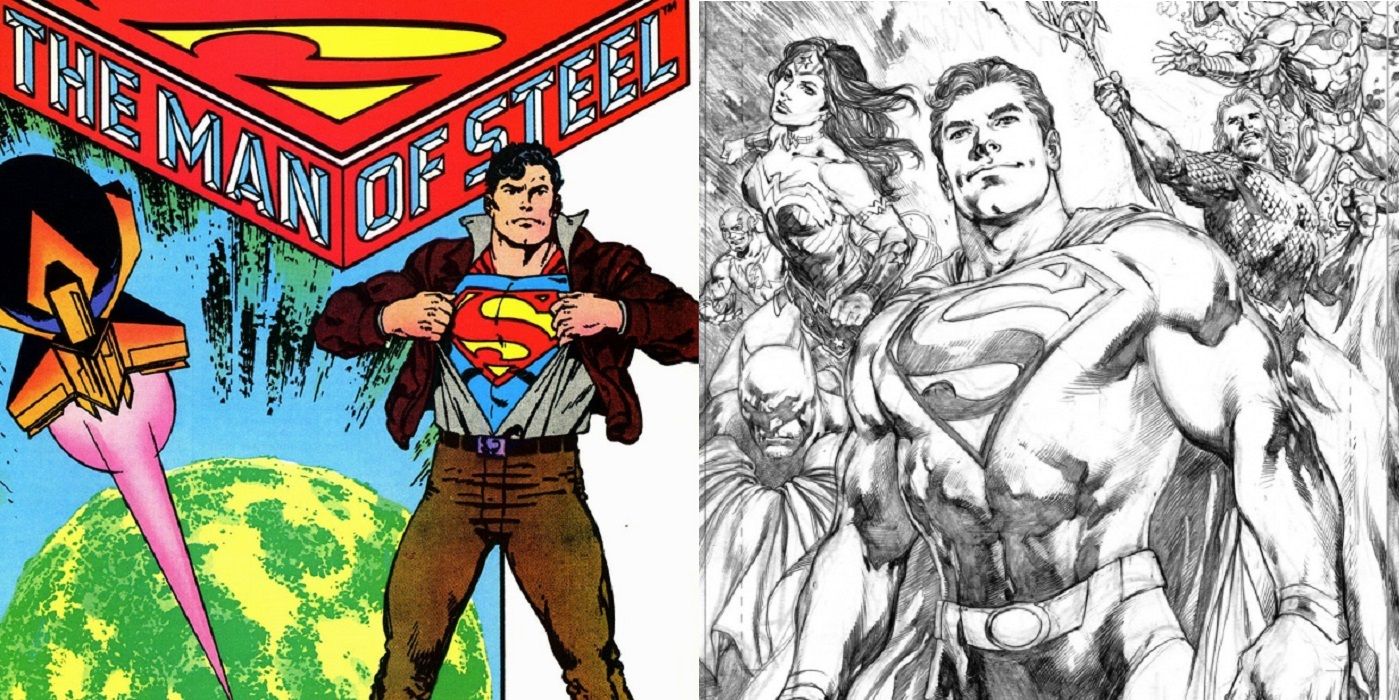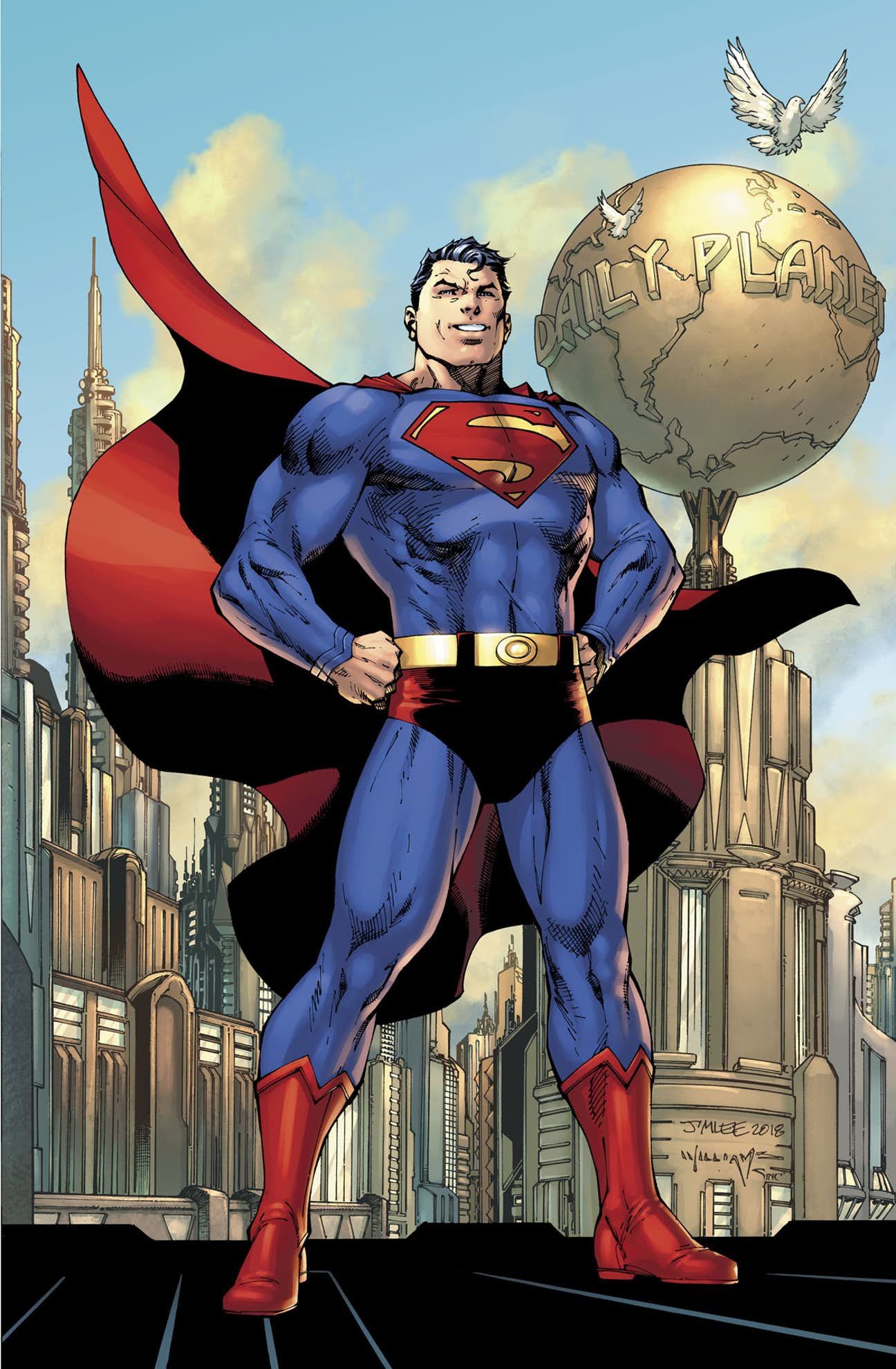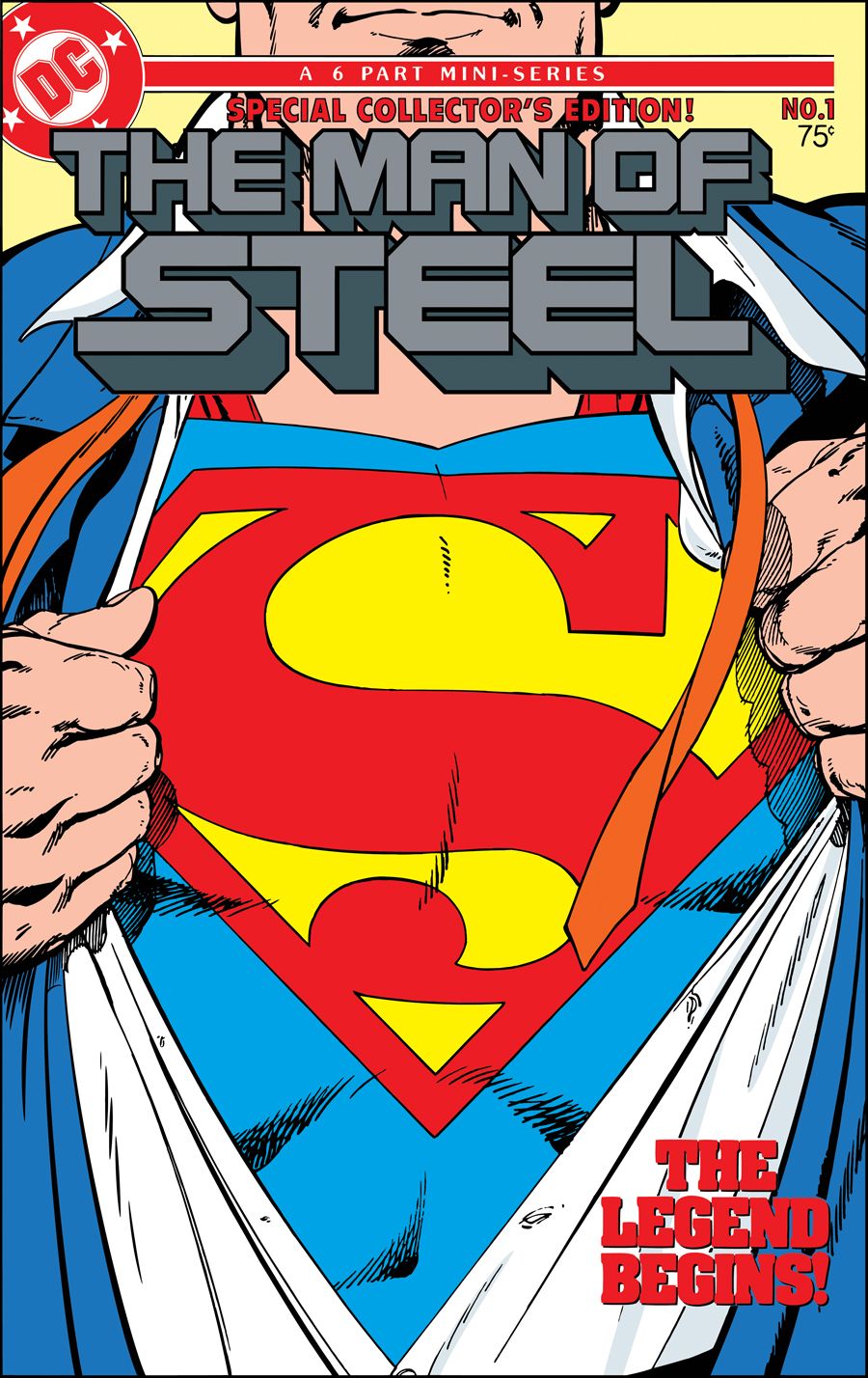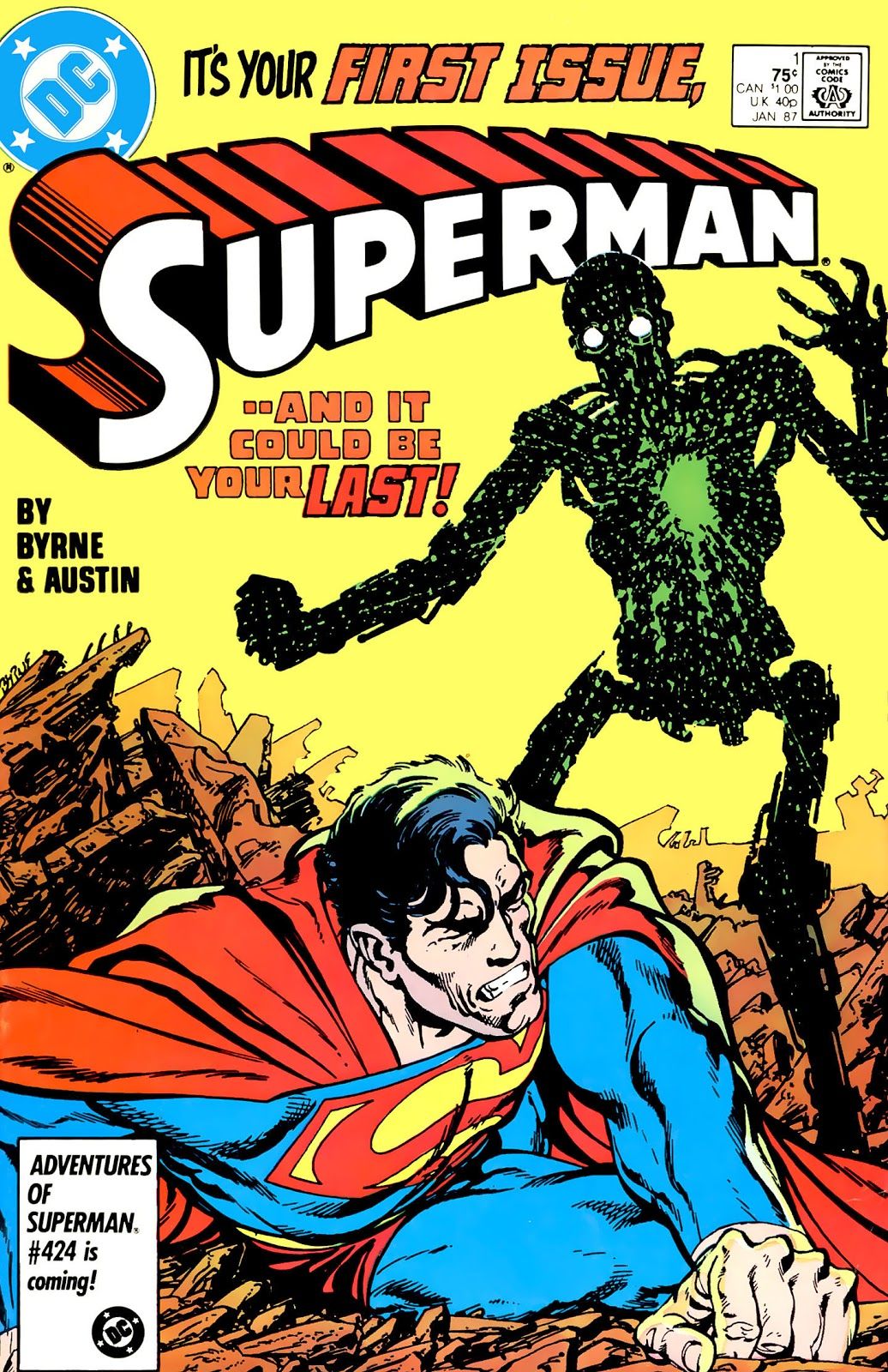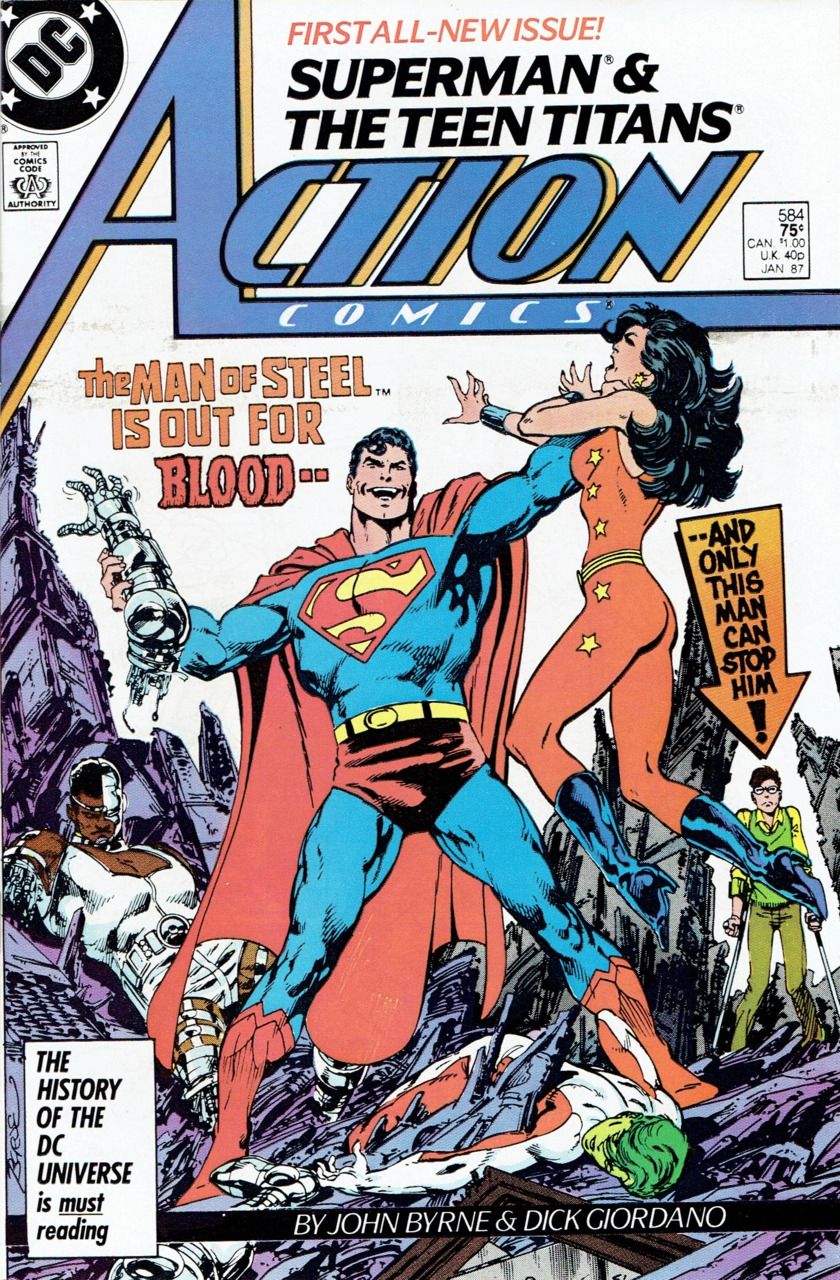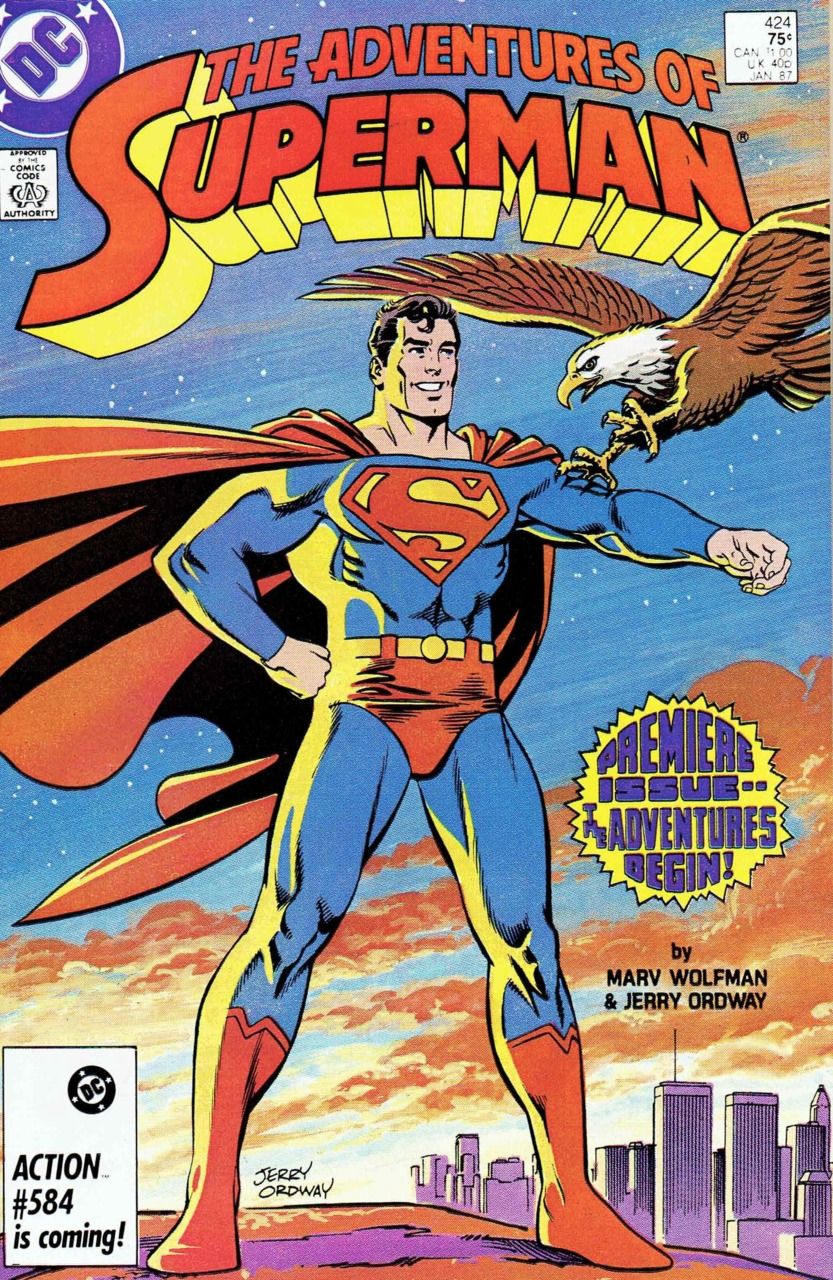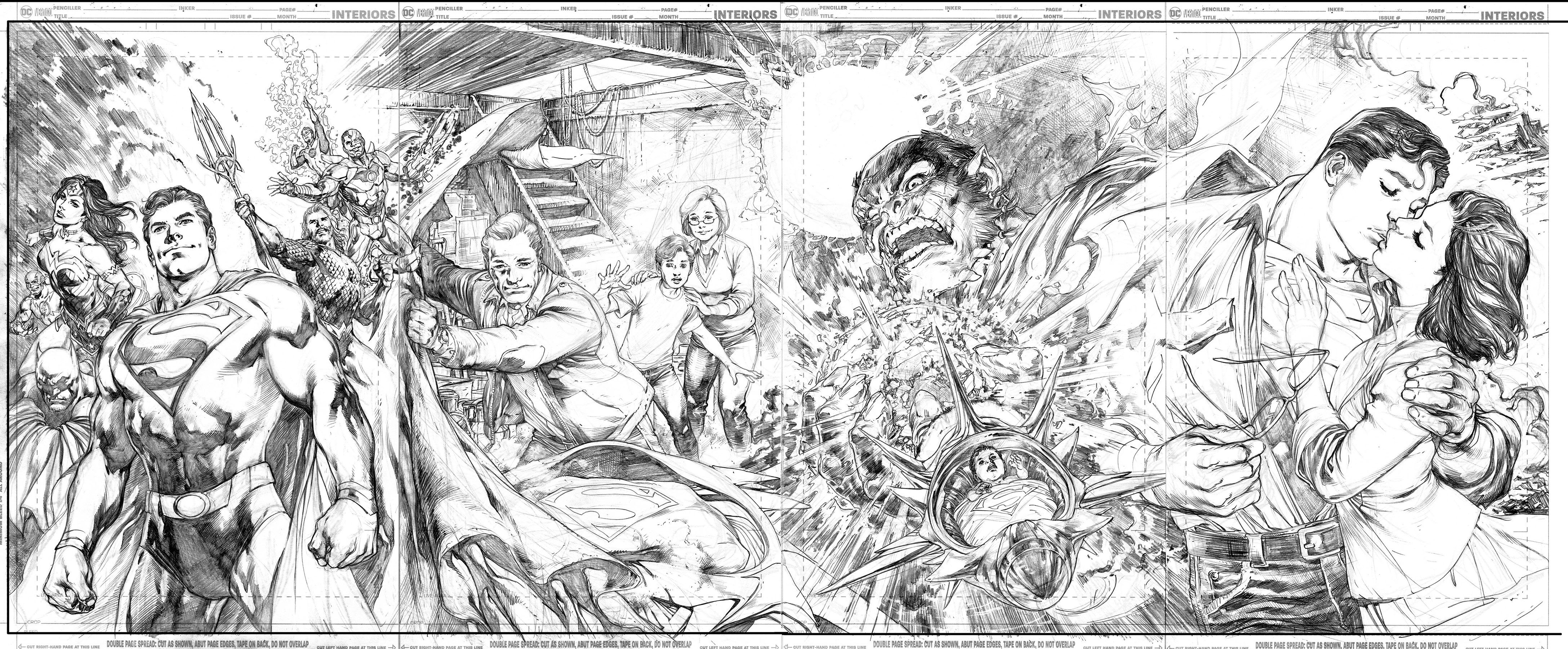When Brian Michael Bendis announced last year that he was leaving Marvel Comics, where he had been one of their most notable writers since 2000, for DC Comics, there was a good deal of mystery over what titles Bendis would be writing when he started at DC in 2018. On Thursday, Bendis solved a little bit of that mystery by revealing that he will be taking over both Superman titles following Action Comics #1000 (Bendis will make his debut with a story in that comic), with his Superman run eventually following in Action Comics #1001 and a re-launched Superman ongoing with a brand-new #1.
After Bendis' debut on the character in Action Comics #1000, the monthly Superman titles will take a brief hiatus while Bendis writes a six-issue miniseries called Man of Steel that will lead into his aforementioned Superman run (in Action Comics #1001 and Superman #1). If much of that sounds a bit familiar, you are not suffering from deja vu, as it very pointedly evokes what happened when another prominent Marvel creator by the name of John Byrne left Marvel Comics for DC Comics 32 years ago.
RELATED: Bendis Launching New Superman Title for DC Comics: Man of Steel
Like Bendis' early days with Caliber Comics, John Byrne also began his comic book career working for a smaller comic book company, doing a number of stories for Charlton Comics in the mid-1970s. Marvel writer Chris Claremont had seen Byrne's work at Charlton and kept hounding his editors to give Byrne a chance at drawing one of Claremont's Marvel projects. Finally, Byrne was given a chance on Claremont's Iron Fist series and it was soon readily apparent that Marvel had found a new star artist. After working with Claremont on a couple of other titles, Byrne then joined Claremont on X-Men, where the creators would turn the series (which was bi-monthly at the time) into a hit (although, as Byrne has always been quick to note - sales on the title kept going up after Byrne left, with the book not becoming Marvel's number one seller until a few years after Byrne's departure, during Paul Smith's run on the title).
In 1980, Byrne left X-Men to take over writing and art duties on Fantastic Four for a long run that would also make Fantastic Four one of Marvel's best-selling titles. During this period, he also launched an Alpha Flight ongoing series and then later had a brief stint on Incredible Hulk (where he switched places with the Hulk creative team, with Bill Mantlo and Mike Mignola taking over Alpha Flight from Byrne).
During Byrne's rise to fame, Marvel Comics briefly flirted with the idea of taking over DC Comics' superhero line through a deal where Warner Bros. would license the DC characters to Marvel. When this was a possibility, Byrne submitted a proposal to take over Superman. That deal never progressed all that far, but obviously it showed that Byrne was very interested in taking on Superman.
In the early 1980s, Steve Gerber and Frank Miller pitched DC on a reboot of their three main characters, Batman, Superman and Wonder Woman. They would be all part of a shared line called Metropolis, with each line being symbolized by an iconic description. There would be Amazon (written by Gerber), Dark Knight (written by Miller) and Man of Steel (or maybe THE Man of Steel) (written by Gerber and Miller together).
However, DC soon decided that, as part of a celebration of their 50th anniversary in 1986, they would reboot the DC Universe. As part of the reboot, they decided that they would accept pitches (this would be roughly early 1985) from a number of different creators for ideas on rebooting their major characters. Gerber wanted no part of competing with other creators over the gig, so he backed out (he and Miller also were hoping to get some new creator-owned options involved in their deal that clearly wasn't going to happen). Miller just adapted his Dark Knight pitch "Batman: Year One" when Denny O'Neil took over editing duties on the Batman titles. Greg Potter and George Perez's Wonder Woman pitch was chosen for Wonder Woman.
For Superman, though, DC was having trouble picking out the right pitch.
Page 2: [valnet-url-page page=2 paginated=0 text='Byrne%20Had%20the%20Right%20Pitch']
The writer of Crisis on Infinite Earths, Marv Wolfman, who had recently had a run on Action Comics with Gil Kane, and it appeared likely that he was going to be involved in the Superman reboot in some capacity. He contacted Byrne (presumably knowing that Byrne had wanted to work on Superman earlier and also knowing that Byrne had recently gone freelance so he was not under contract to Marvel any more) and told him that he should get in on the pitch, as well (even knowing that theoretically telling Byrne might have led to him getting pushed out of the project himself. That's how much Wolfman thought that Byrne was perfect for this). Byrne ultimately agreed.
One of the fascinating aspects of all of this is that DC really did not have a whole lot of direction with most of these pitches besides the fact that they would all be considered "reboots." The problem is that they did not really specify how the characters would be rebooted, so you'd have a Batman reboot that barely changed things, a Wonder Woman reboot that changed her status quo dramatically and a Superman reboot that ultimately found a bit of a middle ground. Knowing that they wanted a reboot, Byrne pitched a Superman where we see him slowly learning to make it as a superhero. DC liked that idea, but didn't want the ongoing series to be like that (they were worried it would be too much of a change), so instead, they asked Byrne to do those stories in a stand-alone miniseries that would take place before the new ongoing books.
The miniseries would be called Man of Steel, and Byrne would write and draw it (with inks by Dick Giordano), as Superman's history was completely re-written, with his past as Superboy erased, his life as Clark Kent being much different (as now his powers slowly kicked in over time) and Ma and Pa Kent remained alive....
After the Superman books went on hiatus for a little while, they then relaunched, with Byrne debuting a brand-new Superman series that began with a new #1...
as well as taking over Action Comics, which was now a team-up series featuring Superman and a different superhero each issue...
Meanwhile, Marv Wolfman and Jerry Ordway took over the previous Superman title, which was now re-named Adventures of Superman...
RELATED: Bendis Promises His Superman Will Not Reboot the Rebirth Version
While Byrne did not initially plan on leaving Fantastic Four when he got the Superman deal (he had drawn an issue of a Batman miniseries before without incident), he noticed that things were suddenly a good deal icier at Marvel after he had agreed to reboot one of their biggest rival's biggest characters. Ultimately, it got so untenable that he left to concentrate on the Superman books.
After a year, Marv Wolfman left the Superman books and Byrne took over writing duties on Adventures of Superman, as well. Not only that, but he launched a year-long series of miniseries (World of Krypton, World of Smallville, and World of Metropolis) that filled in details about Superman's various worlds (Action Comics eventually became an anthology series that came out weekly). At the end of his second year's worth of stories, Byrne left the series, having written or drawn an astonishing 80 issues or so in those two years (he even did a graphic novel with legendary Superman artist, Curt Swan).
Now that we've told you about Byrne's run, let's see how what we know about Bendis' upcoming run compares to Byrne's debut.
Page 3: [valnet-url-page page=3 paginated=0 text='Comparing%20the%20Byrne%20Reboot%20With%20the%20Bendis%20Relaunch']
Unlike Byrne, Bendis is not coming here to reboot the Superman titles. He's following up on the reboot that already occurred during the DC Rebirth issues of Superman. In that regard, Bendis' miniseries, Man of Steel, is seemingly set up like Byrne's original, in that it retells Superman's history...
But the major difference is that Byrne's series was establishing brand new continuity, while what Bendis is doing is simply re-affirming the new continuity that had already been established during DC Rebirth, when the New 52 Superman merged with the DC Rebirth version of Superman. Essentially, Bendis will be making it clear what, exactly, is in continuity in Superman's past now. He likely has a free hand to establish what parts of continuity that he keeps and what he leaves out.
RELATED: Bendis’ New Superman Villain Has Ties to Krypton
Also, unlike Byrne, there isn't a third title written by a different writer. It will just be Bendis on Superman and Action Comics, although it is interesting to note that he will get a new #1, just like Byrne, and that his Action Comics run will spotlight Metropolis specifically, much like how Byrne chose to spotlight Metropolis in its own miniseries in his second year (and Byrne, of course, also did a good job developing Metropolis period during his stint on the book. Byrne introduced Captain Maggie Sawyer and developed her as a great new supporting character).
All in all, the similarities are really just surface ones. Bendis is here to do a whole different approach than Byrne was back in 1986, it is just that he is doing so in a way that evokes Byrne in a few fascinating ways (Man of Steel miniseries, writing both Superman and Action Comics and relaunching Superman with a new #1).

